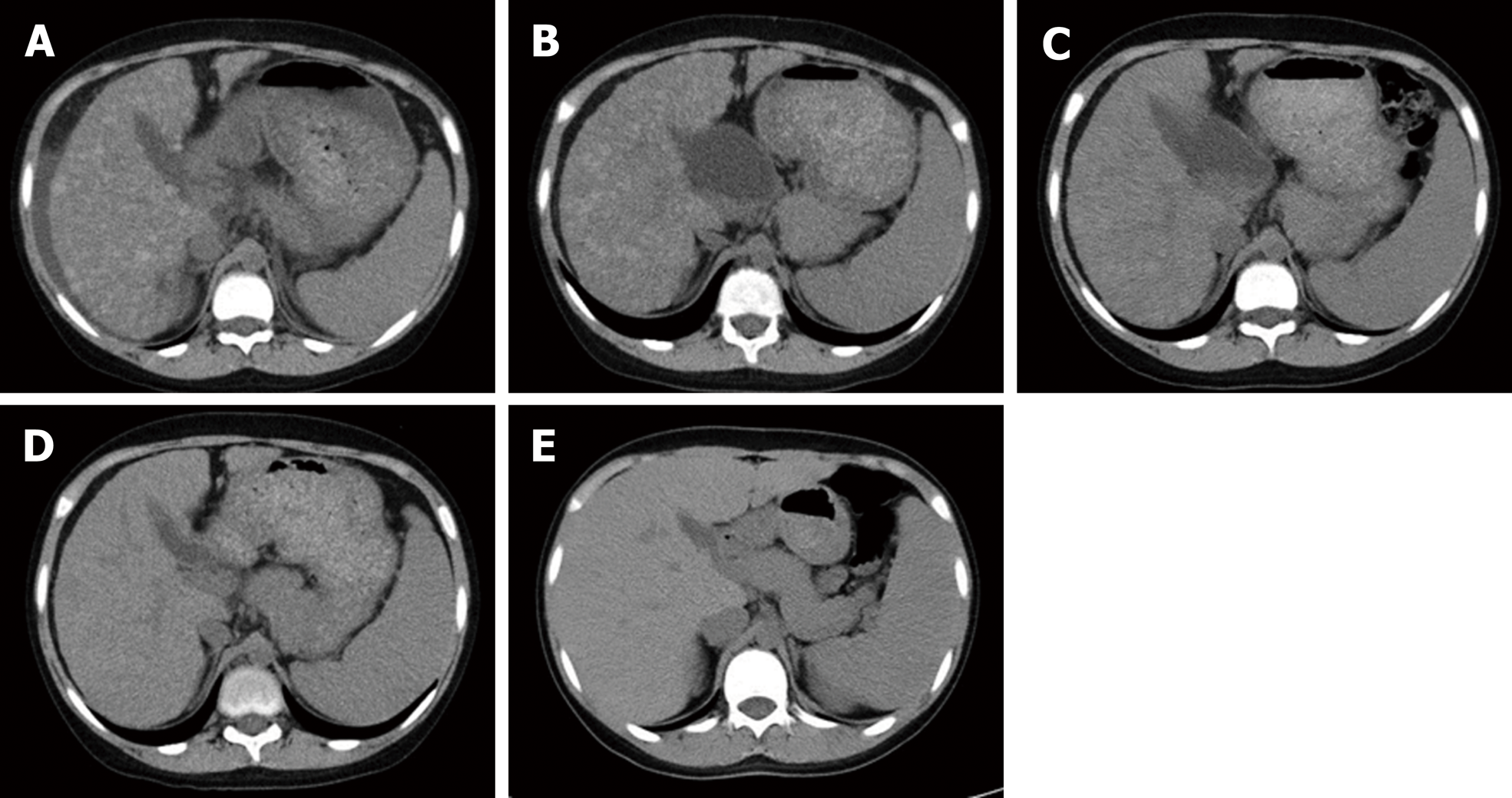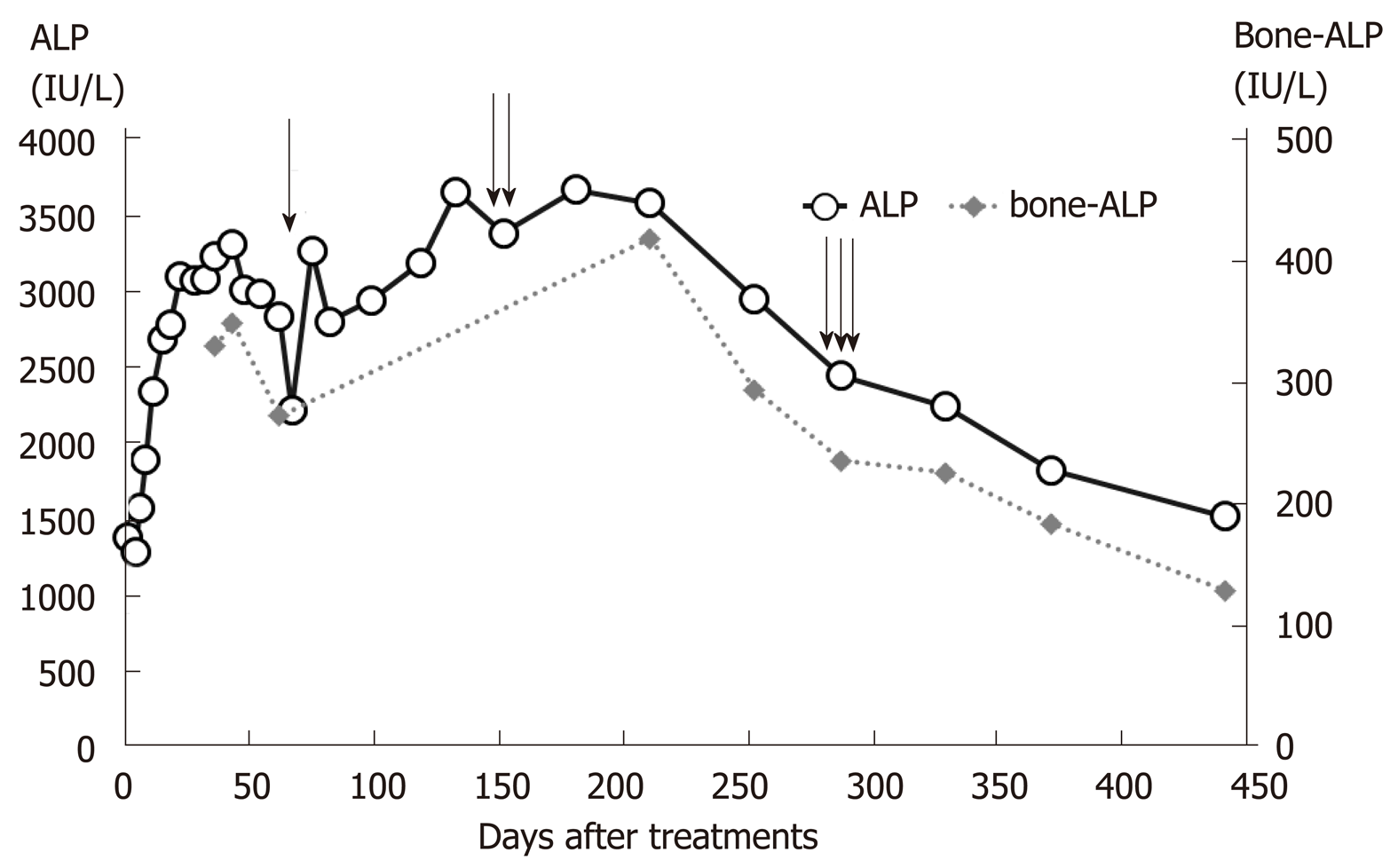Copyright
©The Author(s) 2019.
World J Hepatol. Jul 27, 2019; 11(7): 607-612
Published online Jul 27, 2019. doi: 10.4254/wjh.v11.i7.607
Published online Jul 27, 2019. doi: 10.4254/wjh.v11.i7.607
Figure 1 Hepatic computed tomography image obtained while receiving Zn and trientine treatment.
The mottled nodular shadows with a high density in the liver improved over time. However, splenomegaly did not improve. A: On admission; B: 1 mo after treatment; C: 2 mo after treatment; D: 4 mo after treatment; E: 14 mo after treatment.
Figure 2 Magnetic resonance imaging scan of the knee during the hospitalization.
T2-weighted image. A: Mildly increased signal intensity in the medial meniscus of right knee; B: No abnormal signal intensity.
Figure 3 Blood alkaline phosphatase and bone type alkaline phosphatase levels while receiving Zn and trientine treatment.
The blood alkaline phosphatase (ALP) and bone type ALP levels increased with deterioration in knee pain owing to trientine treatment. However, the blood ALP and bone type ALP levels gradually decreased with improvement in the clinical status of Wilson disease, and pain was attenuated in both knees. Zn and trientine (15 mg/kg/d) were administered on Day 5, and trientine was increased to 30 mg/kg/d on Day 8 and 40 mg/kg/d on Day 40. Trientine was then decreased to 30 mg/kg/d on Day 70 (one black arrow), 20 mg/kg/d on D 152 (two black arrows), and 10 mg/kg/d on Day 288 (three black arrows).
- Citation: Kido J, Matsumoto S, Sugawara K, Nakamura K. Wilson disease developing osteoarthritic pain in severe acute liver failure: A case report. World J Hepatol 2019; 11(7): 607-612
- URL: https://www.wjgnet.com/1948-5182/full/v11/i7/607.htm
- DOI: https://dx.doi.org/10.4254/wjh.v11.i7.607











